
- Poems Poetry Art
- Author
- Alfred French (11)
- Charles Bukowski (12)
- Edgar Allan Poe (16)
- Edmund Spenser (7)
- Eyvind Earle (15)
- Jack Hirschman (16)
- John Hejduk (9)
- John Milton (7)
- Lance Woolaver (7)
- Lindley Murray (8)
- Patti Smith (16)
- Reilly Rhodes (11)
- Shel Silverstein (9)
- Thornton Wilder (6)
- Unknown (9)
- Various (40)
- William Blake (9)
- William Shakespeare (7)
- Wulf Segebrecht (17)
- Yoko Ono (6)
- ... (3205)
- Format
- Board Book (2)
- Books (3)
- Box Set (2)
- Broadside (2)
- Chapbook / Pamphlet (9)
- Cover Rigid (3)
- Hard Cover (2)
- Hardback (10)
- Hardcover (499)
- Leather (6)
- Library Binding (2)
- Mixed Lot (6)
- Paperback (100)
- Paperback / Softback (4)
- Perfect (8)
- Physical (6)
- Record (2)
- Softcover (13)
- Trade Paperback (122)
- Unknown (8)
- ... (2634)
- Isbn
- 0791409910 (4)
- Doesnotapply (10)
- 2911127552 (4)
- 9780300206074 (4)
- 9780500510148 (4)
- 9780520222434 (4)
- 9780692125199 (3)
- 9780742511279 (6)
- 9780801437588 (3)
- 9780820330877 (4)
- 9780962264603 (4)
- 9780982340325 (3)
- 9780982410059 (4)
- 9780996067614 (10)
- 9781419721977 (10)
- 9781433140785 (3)
- 9781457607301 (4)
- 9781852424329 (4)
- 9781933947273 (4)
- 9782364370319 (10)
- ... (3341)
- Item Length
- Language
- Arabic (3)
- Czech & English (11)
- Dutch (5)
- Eng, Gec (3)
- English (1337)
- English, Japanese (3)
- English, Persian (3)
- English, Russian (9)
- French (43)
- Germ, German (4)
- German (45)
- German, Germ (12)
- Hebrew (3)
- Italian (11)
- Japanese (18)
- Latin (11)
- Persian (7)
- Portuguese (3)
- Russian (19)
- Spanish (13)
- ... (1880)
- Type
1805 WILLIAM BLAKE ENGRAVINGS Hayley BALLADS ANIMALS Children's Poems RARE 1ST
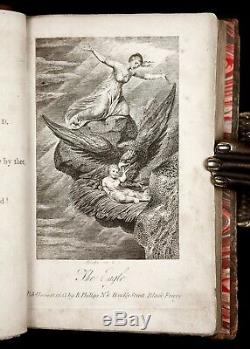
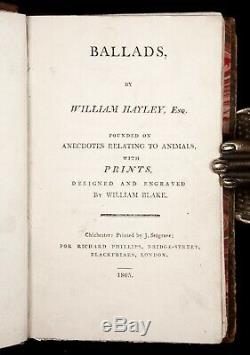
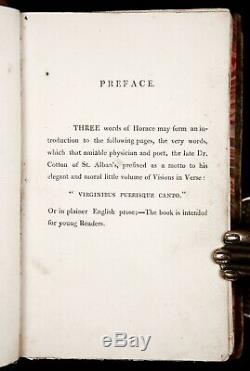
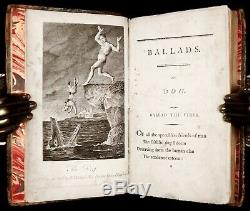
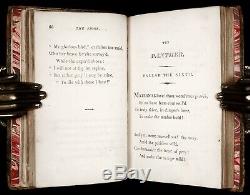
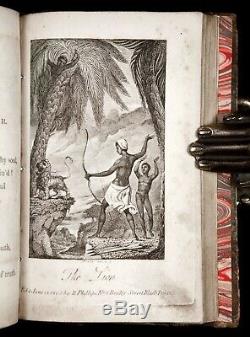
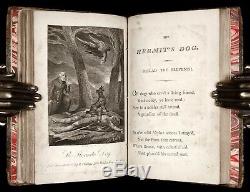
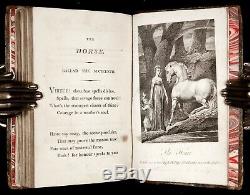
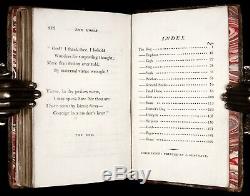
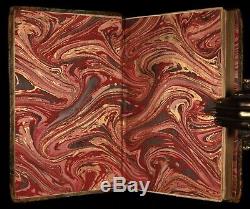


[English Literature - Poetry] [Early Children's Books] [English Book Illustration - Georgian era]. Printed in Chichester by J. Seagrave for Richard Phillips, 1805. With 5 plates designed and engraved by William Blake.
RARE First Complete Edition of this uncommon book containing some of the most hauntingly beautiful examples of Blake's work as a commercial illustrator! William Hayley (1745 - 1820) was a prolific English writer, today remembered primarily for having been Blake's patron, and as the biographer of his friend William Cowper. The book is a series of fifteen didactic ballads for children, each devoted to a different animal, and offering states:'Virginibus puerisque canto,' or in plainer English prose: - This book is intended for young readers. " (being a quote from Horace's Ode 3.1.4: meaning literally "I sing to maids and youths).
Blake designed and engraved five plates for this book, which his patron "Hayley seems to have invented as a make-work project for Blake" (Morgan Library). It was originally meant to have been published in fifteen separate parts with illustrations by Blake, but the series was discontinued after only four parts in 1802. It was finally issued in book form in 1805 (as offered here), with 2 additional designs appearing here for the first time ("The Horse" and "The Hermit's Dog").
Blake entirely re-engraved the plates for the present edition, and he wrote that he "hope[d] that the public will approve of my rather giving a few highly laboured plates than a greater number and less finished" (letter to Hayley, April 25, 1805). The immediately recognizable, dreamlike quality of Blake's vision elevates (and effectively disrupts) an otherwise conventional volume of verse. The animals in Blake's designs disrupt and undermine not only European preconceptions of exotic creatures, but also Hayley's narratives , expressing Blake's restiveness under the demands of patronage, particularly Hayley's over-regulation of a project that was meant to relieve Blake of the drudgery of copy-engraving and provide a venue for original compositions. Gilchrist in his Life of William Blake reports that the edition was published for Blake's benefit; which, I fear, proved nil.The book fell still-born from the press, though now in some degree of request, on account of Blake's plates. ['The Horse'] is perhaps the finest in the series. Even though the horse's hind leg be in an impossible position, and though there be the usual lack of correct local detail, very striking and soulful is the general effect; especially so is that serene, majestic, feminine figure, standing before her terrified child and bravely facing the frenzied animal, which, by mere spiritual force, she subdues into motionless awe. While Blake was resident in Felpham on the Sussex coast, his new patron William Hayley began to write a series of ballads to be illustrated by the artist-engraver. These were published in 1802 as quarto numbers, each with three engravings by Blake.
Sales were less than brisk and the project ceased after only four ballads were issued. In January 1805, Hayley contacted the London bookseller Richard Phillips about publishing a new, octavo edition of the ballads.Blake began to execute engravings for this edition no later than March and completed five plates by June. For this 1805 volume, Hayley added twelve ballads to the four first published in 1802. Blake engraved new plates of his designs for three of the 1802 ballads and both designed and engraved new illustrations for two of the additional ballads. Blake and Phillips were to'go equal shares...
In the expense and the profits' Blake's letter to Hayley of 22 Jan. Robert Southey's mocking review of Hayley's poems and Blake's illustration to'The Dog' appeared in the Annual Review for 1805. The projected plan of 15 quarto ballads did not come to fruition, in part, because Hayley's distribution of the ballads primarily to his circle didn't create a sufficient market to recoup Blake's production costs. Hayley's flawed scheme also relied on a market sympathetic to Blake's designs and Hayley's circle was not that market. For three of these engravings Blake drew on his 1802 frontispieces to'The Dog','The Eagle', and'The Lion', and executed two new, original designs to illustrate The Hermit's Dog and The Horse.
In the case of The Dog and The Lion, Blake makes some significant changes to his 1802 frontispieces; for instance, depicting more of the partially submerged crocodile's jaws, emphasizing rows of sharp teeth, and delineating an eye. In the 1805 engraving, the crocodile is rendered as a more menacing presence. Similarly, the 1805 engraving illustrating The Eagle alters the bird's wings and the orientation of the head and opens its beak. These changes convey a greater sense of threat to the infant than the 1802 frontispiece. Of the two additional designs Blake executed for the 1805 ballads, the first illustrates the eleventh ballad of the collection, The Hermit's Dog , which revisits the theme of canine loyalty Hayley celebrates in The Dog.Yet, rather than saving his master from death, The Hermit's Dog instead presents the dog as'A guardian of the dead' before becoming a loyal companion to the titular hermit. Blake's illustration depicts a woodland scene with the hermit approaching a clearing to find a large black dog standing on the body of a slain vulture, fiercely protecting the corpse of its dead master, a Knight Templar, from another vulture overhead. In Hayley's narrative, the loyalty shown by the dog provides a paradigm of Christian virtue for the Hermit, prompting him to entomb the knight, and, while reinforcing his commitment to eremitism, provides the type of virtuous companionship absent from the world of man.
The focus of Blake's design on the confrontation between the predatory vulture and the aggressive dog over the fallen knight, whose cruciform pose is mirrored by the Maltese cross on his cloak and the handle of his discarded sword, downplays Hayley's notion of virtuous companionship in favour of bestial savagery. The final illustration depicts the climax of the final ballad in the collection, The Horse. Maternal courage is [here] celebrated as the'fairest form' of virtue, because it mitigates the masculine corruption of nature: the stallion's wildness derives, in part, from its male rider's restrictive and vain tutoring. As with The Hermit's Dog, Blake's design for The Horse depicts a moment of confrontation as the mother stands stoically before the horse, interposing between the beast and her daughter with maternal courage inspiring Nature to render the hitherto raging stallion'fondly tame'. Like their earlier versions in the 1802 edition, Blake's engravings in the 1805 edition serve as frontispieces for their respective ballads.In the case of The Dog, The Eagle, The Lion , and The Horse , the visual revelation of the climax of Hayley's ballad does much to undermine the dramatic tension, and while both editions afforded Blake an outlet of creativity, they were also a product of Hayley's patronage. Blake's exercise of creative expression is indulged while also being regulated within the limits of what both patron and client considered a commercially viable project. Hayley intended for the ballads to provide Blake with financial return, which financial return, which required producing a saleable product in a crowded marketplace. Like the 1802 edition, the 1805 edition failed to generate even moderate commercial interest, and commercial interest, and despite a puff by Hayley's friend Samuel Greatheed, was ridiculed by Robert Southey in the Annual Review. William Blake (1757 - 1827) occupies a unique place in the history of Western art.
His creativity included both the visual and literary arts. In his lifetime he was best known as an engraver; now he is also recognized for his innovative poetry, printmaking, and painting. Blake's keen perception of the political and social climate found expression throughout his work. His strong sense of independence is evident in the complex mythology that he constructed in response to the age of revolution. Blake was already recognized as an engraver at age 25, when his first volume of poems appeared.
At 33, in The Marriage of Heaven and Hell, he audaciously claimed that his birth had marked the origin of a "new heaven" in which his own art would exemplify the creativity prefigured by Milton and Michelangelo. By that time, Blake, in one of his most productive periods, had already produced Songs of Innocence and was at work on a series of illuminated books. Bentley, BB, 465; Easson & Essick, William Blake: Book Illustrator, VIII; Bindman, Complete Graphic Works of Blake, 403-407; Keynes 74. Small Octavo, leaves measure 15.3 cm x 9.6 cm i. Modern quarter-leather over contemporary marbled boards (with original calf corners), new marbled endpapers.PAGINATION: (2 blank), (4), 212, (1, index) (3 blank) pp. Complete with 5 fine plates designed and engraved by William Blake (all signed and dated 18 June 1805). Without the half-title (as often), but with front and rear blank leaves present.
The "Dog" plate, usually bound as a frontispiece, is here bound facing p. At the beginning of The Dog: Ballad the First. Includes'Preface' (on recto of preliminary leaf following the title), and'Index' i. Table of contents with an imprimatur at bottom (on recto of the unnumbered leaf at the end). Complete, with all 5 plates, preface and Index (without the half-title, as often).
Boards rubbed, with wear to edges. Endpapers renewed; original blanks preserved. Interior with some occasional hand-soiling and light spotting to text-pages and plates mostly marginal and rather harmless. First three text leaves (A1-3) with minor, inconspicuous repairs to inner margin (no loss of text). In all, a solid, well-margined, if a bit "tired" example of this rare book, with all five Blakes plates present, intact, and in an excellent, strong impression. The item "1805 WILLIAM BLAKE ENGRAVINGS Hayley BALLADS ANIMALS Children's Poems RARE 1ST" is in sale since Monday, July 20, 2020. This item is in the category "Books\Antiquarian & Collectible". The seller is "lux-et-umbra" and is located in Salt Lake City, Utah.This item can be shipped worldwide.
- Year Printed: 1805
- Modified Item: No
- Country/Region of Manufacture: United Kingdom
- Topic: Poetry
- Binding: Leather
- Region: Europe
- Illustrator: William Blake
- Author: William Hayley, William Blake
- Subject: Illustrated
- Original/Facsimile: Original
- Language: English
- Publisher: J. Seagrave for Richard Phillips
- Place of Publication: Chichester
- Special Attributes: COMPLETE

